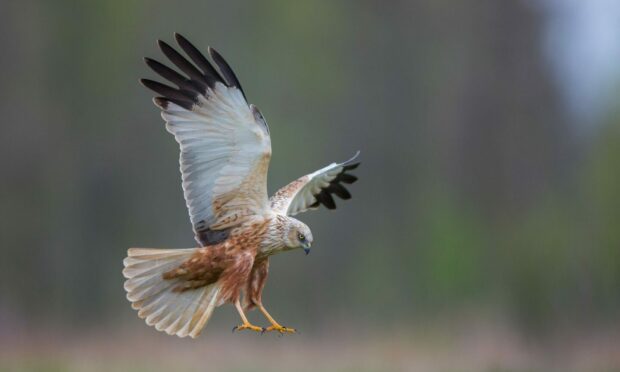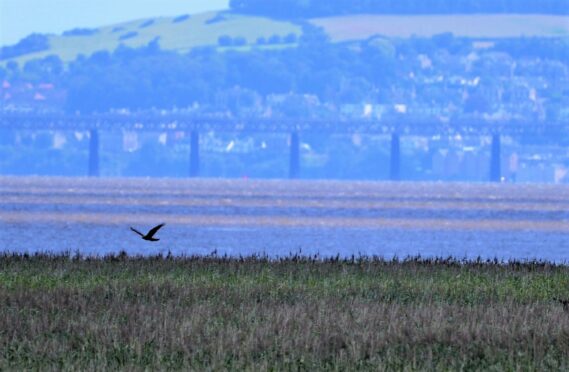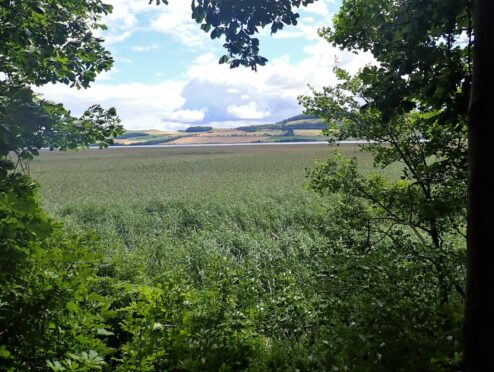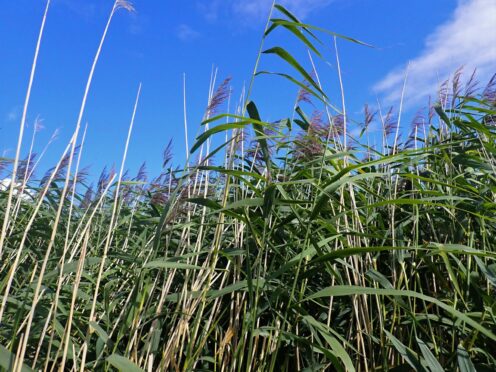As if orchestrated by puppeteer strings, the male marsh harrier floated above the Tay reedbeds near Errol, dancing and swaying in the air on easy wings.
A larger harrier – a female – suddenly rose from the reeds and stalled in mid-air to meet her partner, their talons touching briefly in a moment of exquisite intimacy.
The harriers were some distance away, and as I watched them through my binoculars, it was hard to discern whether this talon contact was indeed a greeting as was my initial perception, or perhaps the male was passing a prey item over.
Engrossed, I kept them under my focus, revelling in their aerial agility as they swirled and swooped together as if they were one.
Another harrier materialised – almost certainly a recently fledged youngster – and the three birds glided over the reedbed backdropped by the Tay Bridge and the towering stanchions of oil platforms in Dundee port.
The incongruity was compelling – the wild, vastness of the reedbeds and the harriers picture-framed against the nearby bustle of a city – a joyous confirmation that humanity and nature can live cheek-by-jowl in blissful harmony.
Marsh harriers are one of Scotland’s rarest birds of prey, with fewer than 15 breeding pairs in a typical year.
Reedbeds are their favoured habitat, which are a scarce commodity in Scotland – although the Tay reedbeds represent the largest continuous expanse of reeds in Britain, covering an area the equivalent of 400 rugby pitches.
Together with a further 700 hectares of mudflats, this area on the north shore of the Tay between Dundee and Perth is a haven for wildlife, including scarce bearded tits, sedge warblers, reed buntings and water rails.
Reedbeds are resilient systems
I ventured down to the edge of the reeds to examine them more closely and brushed my fingers across the stiff, flat, and tapered leaves of one plant.
Their arrangement had an alluring artistic element because they all pointed in the direction of the wind like tiers of elongated flags.
On staring into the reeds, the focus of my eyes became fudged and blurred, creating a hypnotic effect that giddied the mind.
The reed has the distinction of being our tallest non-woody native plant and can tolerate brackish water.
Reeds grow fast – three years ago, a large swathe of the Tay reedbeds were destroyed by fire, but the underground rhizomes (root systems) remained unscathed.
Like a phoenix from the ashes, the reeds quickly regrew and today there is no outward indication of the destruction wrought.
Later that morning, I glimpsed another pair of marsh harriers a short distance further down the Tay near Port Allen.
They pirouetted in the air before venturing across to the Fife side of the river, where I lost sight of them in amongst the patchwork of fields.
They might have gone, but as I turned up my collar as protection against a sudden burst of rain, and headed back towards Errol, the image of their graceful silhouettes etched against a moody sky still burned brightly upon my mind.



